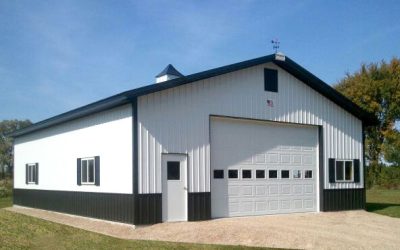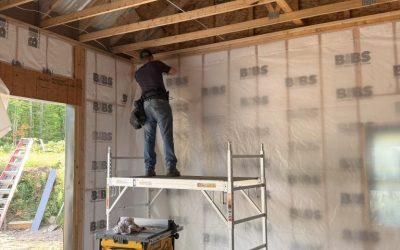At RVI, we know from experience that foundation insulation isn’t optional in Northern Wisconsin. Sure, building codes will tell you the minimum requirements. But as building science experts, we know you should insulate your foundation regardless of what the code says.
This real-world example highlights why understanding your foundation insulation options matters for every build – especially when building in the challenging climate of Northern Wisconsin.
Building Code Requirements for Foundation Insulation
Your local building code determines if – and how much – foundation insulation you need. Energy calculations also play a role in these requirements. But here’s the thing: Even if code doesn’t require it, you should still insulate your foundation.
The energy savings alone make foundation insulation a smart investment! And there are other benefits too, such as moisture control and improved comfort.

4 Key Foundation Insulation Questions to Ask
Before you start insulating, ask these questions:
- Should I insulate from the outside or inside?
- How much insulation do I actually need?
- Do I need vapor barriers for interior installation?
- How do I protect exterior foam board from damage?
Your building code and energy calculations will give you the minimum requirements, but the right choices always depend on your specific situation.
Interior vs. Exterior Foundation Insulation
From a pure energy-cost perspective, it doesn’t matter whether you install insulation on the inside or the outside of your foundation. Both approaches can deliver the same energy savings when done correctly.
The real differences come down to three things: installation challenges, moisture management, and building performance factors.
Benefits of Exterior Rigid Insulation
Installing rigid foam insulation on the exterior of your foundation offers several advantages:
Reduces thermal bridging issues
Thermal bridging happens when heat transfers through materials that conduct energy. Exterior insulation creates a continuous barrier that stops this heat transfer.
Keeps the foundation warmer
A warmer foundation means less condensation risk. This helps prevent moisture problems that can lead to mold and structural issues.
Allows moisture to dry inward
When moisture does get into the assembly, it can dry toward the interior instead of getting trapped.
Downsides of Exterior Rigid Installation
Exterior rigid insulation isn’t always easy to install. We’ve noticed that it can be challenging to install before backfilling, and it’s difficult to protect large exposed areas. Plus, exterior insulation requires careful detailing around penetrations.
Important Rule of Thumb: Never put rigid insulation on interior walls unless you have a fully poured wall or block wall with filled cores. You risk water accumulation in block cores.
Choosing the Right Interior Insulation Option
Looking to go the interior insulation route? You have two main choices: Foam board or BIBS (Blown-In-Blanket System). Let’s go over the pros/cons of each.
Pros of Foam Board Installation
- Easy installation in controlled conditions
- Good thermal R-value when installed correctly
- Creates a drainage plane
Cons of Foam Board Installation
- Risk of moisture trapped between foundation wall and foam board
- Trapped moisture can cause mold growth
- Should only be used on fully poured walls or block walls with filled cores
Pros of BIBS for Foundation Walls
- Can be installed in any conditions and climate
- Excellent R-value at 4.2 per inch
- Extremely vapor open (moisture can dry through assembly)
- Most affordable R-value per square foot
Cons of BIBS for Foundation Walls
- Requires framed cavities against foundation walls
- Best practice includes a drainage plane between insulation and foundation wall (like a weather-resistant barrier)
How to Make the Right Choice for Your Project
The best foundation insulation method depends on your specific project! Consider the local climate conditions, the foundation type (poured vs. block), your install timeline, budget constraints, and the long-term energy performance goals of the project.
Not sure which foundation insulation method is right for your project? This is exactly where RVI’s Sam Hartmann comes in. As a certified Focus on Energy consultant and building science expert, Sam evaluates each foundation situation individually.
Sam can analyze your specific building conditions, climate factors, and performance goals. His extensive expertise helps contractors make informed decisions.
Foundation insulation isn’t just about meeting code requirements. It’s about creating a building envelope that performs well for decades. Whether you choose exterior rigid insulation, interior foam board, or BIBS, the key is proper installation and moisture management.
Want to discuss foundation insulation options or consulting services for your next project? Contact the team at RVI, today!



